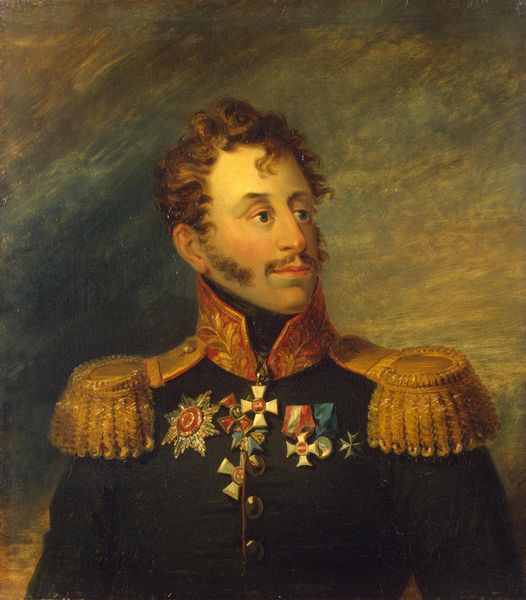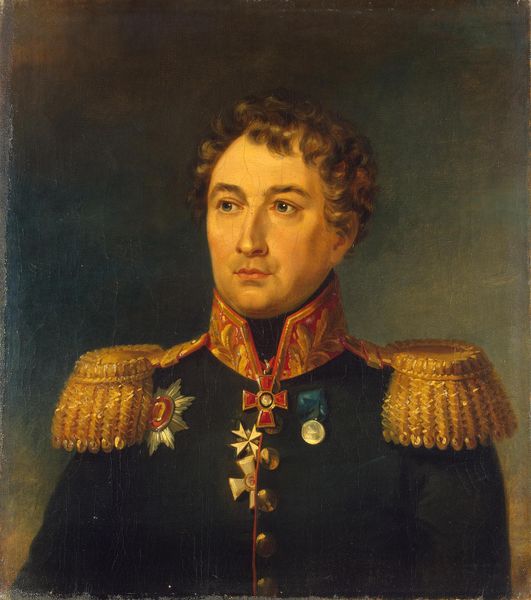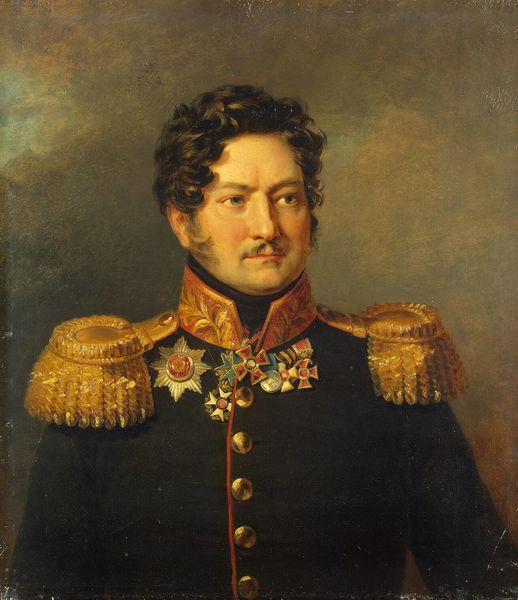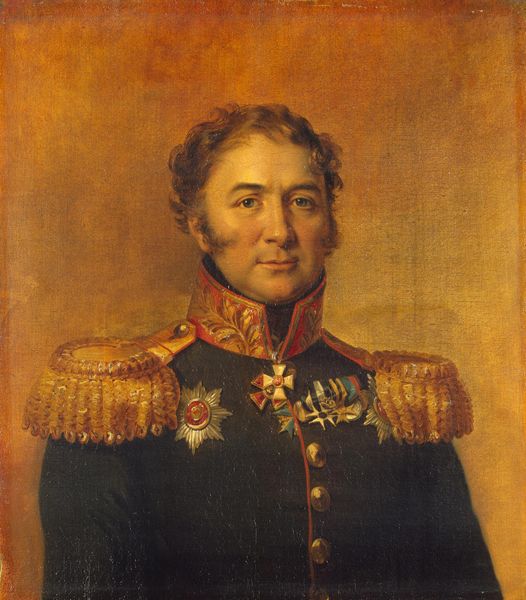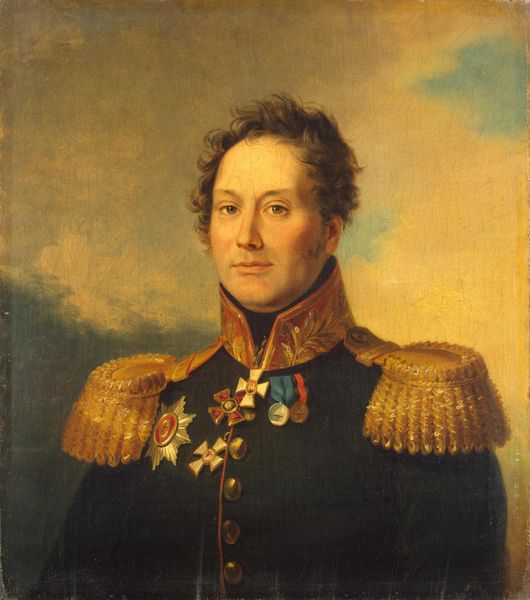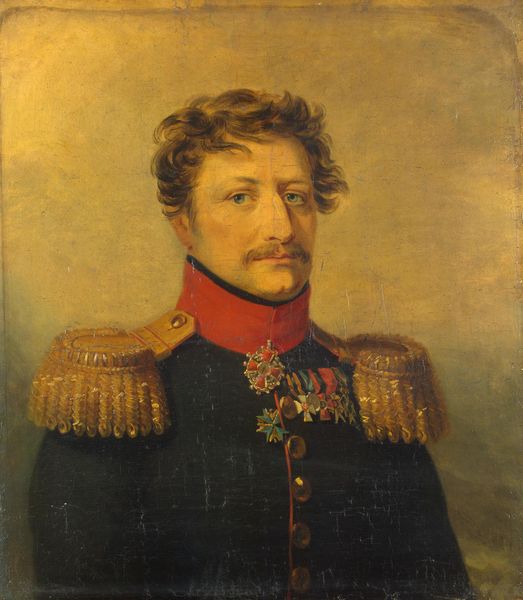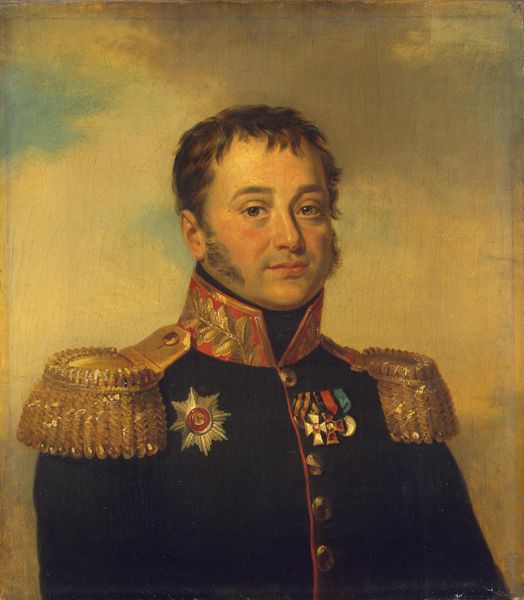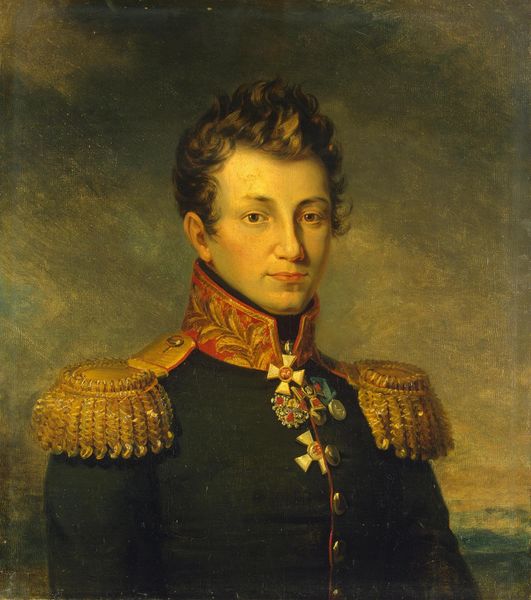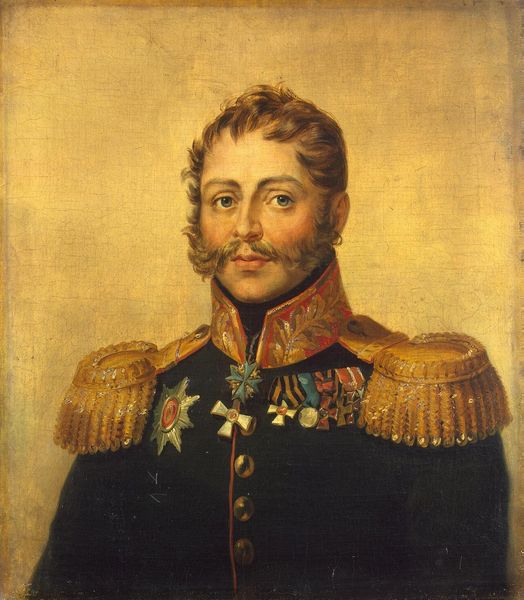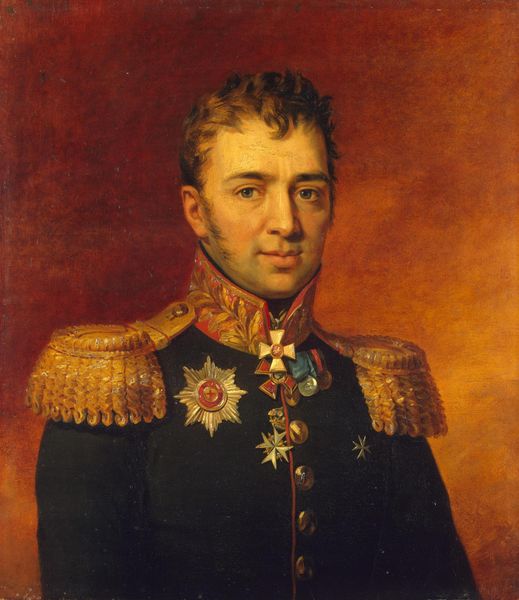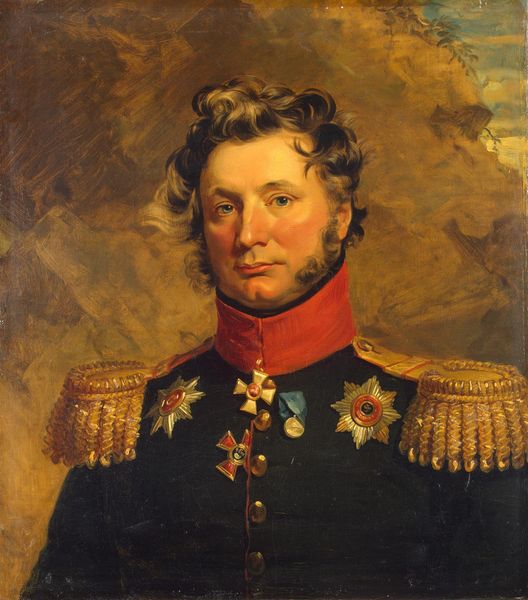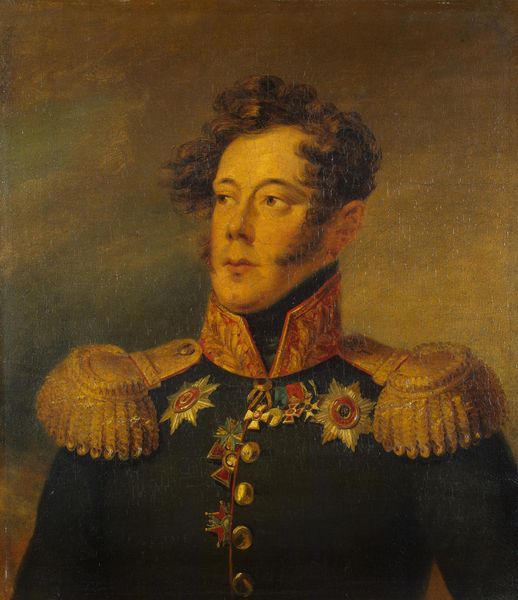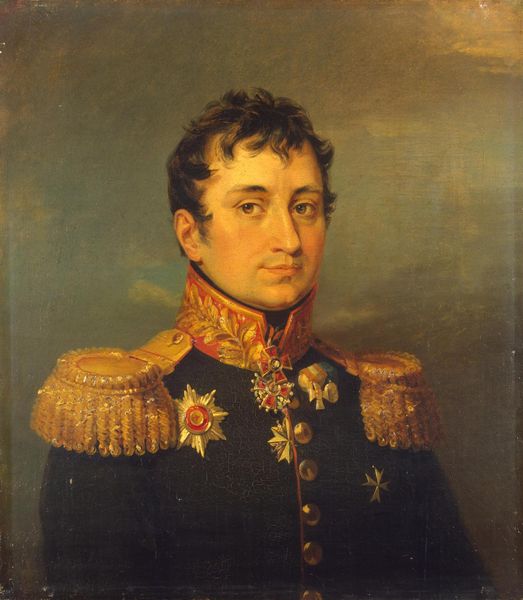
oil-paint
#
portrait
#
oil-paint
#
figuration
#
oil painting
#
romanticism
#
history-painting
Copyright: Public domain
Editor: Here we have George Dawe’s “Portrait of Ivan Vasilievich Argamakov,” an oil painting from 1828. There's such a rigid formality to this painting, it’s almost suffocating. What strikes you most about it? Curator: The portrait is undeniably formal, but that formality speaks volumes about the social and political climate of 19th-century Russia. These portraits weren't merely about capturing a likeness; they were about constructing an image of power and legitimacy, deeply tied to the Czarist regime. How do you see his identity being presented, given the layers of medals and uniform? Editor: I see that he wants to present as a person who is worth recognition because of those signifiers. But his humanity, so to speak, feels hidden. Curator: Exactly. The individual is subsumed by the symbols of the state, echoing Foucault’s concept of power operating through visibility and spectacle. And consider the romanticized, yet indistinct, landscape behind him. It’s not just a backdrop. It’s a carefully constructed narrative designed to reinforce his connection to the land, to Russian identity, but in a very controlled, prescribed way. What does that landscape suggest to you about the kind of narrative being constructed here? Editor: That everything about this is cultivated. This is not necessarily *his* land, but a landscape to which he has been assigned. Curator: Precisely. This painting, therefore, becomes more than a simple portrait. It is a powerful visual statement of class, nationhood, and identity – all carefully managed and controlled by the dominant social structures of the time. It reveals a great deal about the performance of identity. Editor: This has given me a richer sense of how much portraits, even seemingly straightforward ones, reveal so much about historical power dynamics. Curator: Absolutely. Seeing art as enmeshed in social, political, and philosophical thought is important to a more critical understanding.
Comments
No comments
Be the first to comment and join the conversation on the ultimate creative platform.
